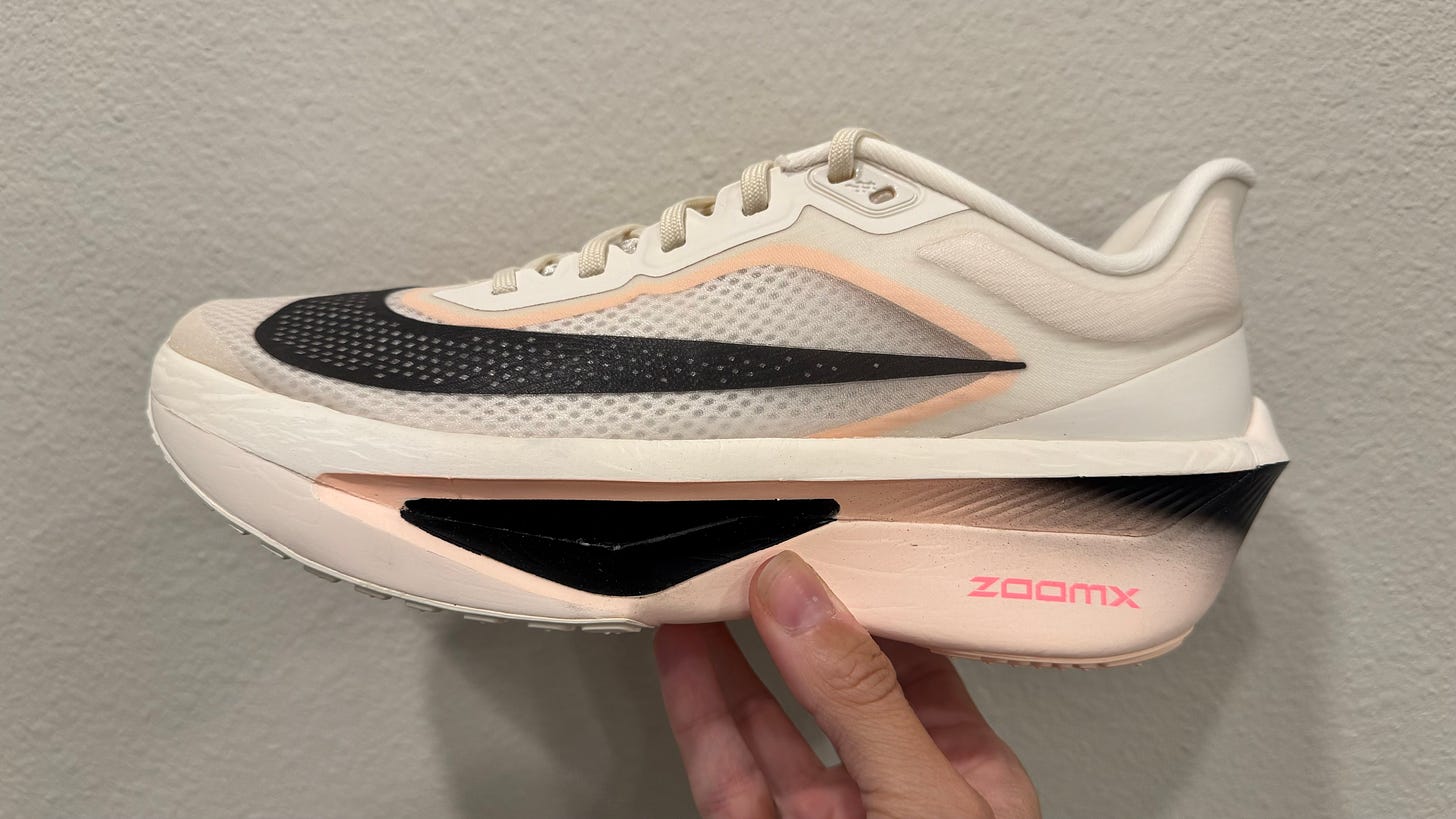How to Talk to Your Friend Who Just Ran a Marathon
Take a beat before you ask someone “what was your finish time?”
I recently wrote a story for Runner’s World article about what equals a “good” beginner marathon time. It’s sort of a misleading title, because there’s no real answer to that. “Good” is a relative term; a “good” race is going to look different for every single runner on that marathon course. The SEO-friendly answer is the average marathon finish time of 4:32:49, according to a study conducted by Run Repeat, but the real takeaway from the story was the idea that finish time shouldn’t be your only motivator for a marathon.
In interviewing Nike run coach Jes Woods—a coach I’ve known since before my first marathon!—for that story, we started talking about an equally important topic: the language we use when talking about marathon finish times.
When you tell someone you ran a marathon, chances are, their first question is “what was your time?” That’s a normal response; running is measured by the clock. Everyone knows how fast the fastest runners finish, and those times can serve as a reference point by which people, including non-runners, can gauge other performances. As a result, the running community has prescribed values to certain benchmarks (a Boston Marathon qualifying time, a sub-4:00 marathon…). But that inherently puts someone’s performance on a “good versus bad” spectrum—faster than X time is good, or slower than Y time is bad.
But we know that focusing solely on the outcome of a race is limiting. In looking at the impact of goal setting on performance, it was determined that process goals had a large effect on performance, performance goals had a moderate effect, and outcome goals had a negligible effect, according to a 2022 meta-analysis published in the International Review of Sport and Exercise Psychology. To simplify that, focusing on the journey instead of the end point is proven to be rewarding and it actually leads to better outcomes. So why do we immediately shift to an outcome-driven focus after the event is over?
What if, instead of asking “what was your time?” you asked someone “how did it go?” That gives the person you’re asking the space to answer in a way that celebrates what actually made them most proud of their performance. Maybe it’s that they found a strong finishing kick, or they didn’t walk at all, or they didn’t let the uphills defeat them, or… or… or… Not everyone is motivated by the clock. Not everyone wants to be subjected to totally made-up time goals that some runners use to judge how “good” of a runner they are. And it can sometimes feel like by asking their time, you’re inviting a comparison to your own—even if you’re not doing that on purpose.
For many runners, the answer to “how did it go” may be the time that they ran. And that’s great! But there are so many other ways to measure success in a marathon. One runner may say “I ran my fastest race yet” (no time mention necessary) while the person who crossed the finish line next to them may say “it was a really tough day but I’m proud of myself for gutting it out.” “I finished faster than I started,” “I had so much fun out there,” or “I went to the pain cave but managed to talk myself out of it” are all totally valid answers, too. The point is, a more open-ended question makes it about the runner and their experience, not the clock.
Obviously, a runner can choose whether or not they want to answer the question “what was your time?” Part of the inspiration behind that original Runner’s World article was educating newer runners as to what the average marathon time is, especially since running social media generally skews towards the faster end of the sport. It’s so important that marathoners—whether they're a first-timer and a repeat runner—understand that running this distance is a totally individual experience, and managing your expectations comes down to looking at your running history and what you want out of the experience.
But we can proactively change the conversation as a community, too. I’ve written a lot about how the language we use to describe our own running journey can have a bigger effect than we think, and as the running boom continues, I hope that the conversations around running continue to shift, too. I’m not saying that finish times don’t matter, or that they aren’t a valid goal. But we all define success differently. Finishing a marathon will always be a great accomplishment, regardless of the time on the clock. Being a little more thoughtful about how we talk to each other is how we continue to create a more inclusive running community.
the rundown
Nike Zoom Fly 6
Nike just announced the Zoom Fly 6, a shoe they’re calling “the ultimate super trainer.” I haven’t run in any previous versions of this shoe, so I ended up comparing it to the shoe it most looks like: the Alphafly. And I really liked it! It’s got a carbon plate sandwiched between a layer of ZoomX foam—the same type you’ll find in race day models—and a more supportive foam that helps stabilize the ZoomX. As someone who regularly uses old Alphaflys for my long runs and speed workouts, I love that this shoe offers similar benefits (42 millimeters of cushioning under the heel, and 8 millimeter drop, a rocker geometry) in a more training-friendly package. But Nike also notes that the Zoom Fly is a “training and racing hybrid,” and since the Alphafly was designed for the fastest runners, I’m interpreting that to mean this might better serve slower runners on race day—and it’s $100 cheaper than its inspiration. It’ll be available November 1.
Is AI Smarter Than Sports Nutritionists?
AI is becoming a bigger and bigger part of our lives—including sport. An October study published in Biology of Sport compared the knowledge of AI to actual humans on the ULTRA-Q, a sports nutrition questionnaire adapted for ultra-endurance athletes. The researchers found that ChatCPT-4 was 93% correct, Microsoft Copilot was 92% correct, and Google Bard was 84% correct. Meanwhile, sports nutritionists were 84% correct, registered dieticians were 76% correct, ultra-endurance athletes were 68% correct, and the general population was 57% correct. ChatGPT actually provided better sports nutrition information than registered dietitians in this example, BUT real-life, individualized nutrition is much more nuanced and most athletes would still benefit from working with a human specialist in sport. However, AI models could become a tool for enhancing nutritional education among athletes.
ASICS x Bandit Running NYC Marathon Collection
This is going to be the most in-demand gear of NYC Marathon week, I’m calling it now. ASICS and Bandit Running teamed up to create a co-branded NYC Marathon collection; I got a sneak peek in Falmouth this summer, and it looks so. Good. I know, running collabs are commonplace these days. But this is the first time ASICS has collaborated with another brand on performance apparel, which is a pretty big deal, and the east-meets-west design inspiration is a nice nod to the unlikely partnership between a legacy brand and a trendy start-up. The collection will be sold at the duo’s integrated pop-up at 21 Greene St. in New York, which opens Thursday; keep an eye on Bandit’s social channels for the pop-up hours. It will also be available at seven run specialty stores across the country, but it will not be sold online.
Tested Podcast
I’m not very well versed in the new track and field regulations that mean some athletes can’t compete in the female category unless they lower their body’s naturally occurring testosterone levels, but I called out the chapter in Maggie Merten’s Better Faster Farther that covered differences in sex development and abnormal testosterone levels and the podcast Tested is an interesting follow-up. A friend sent me the second episode, which explains the murky history behind the first sex testing policies in sport; it was so enlightening, now I need to go back and listen to the whole series.







Love this!
How was it is a great lead in to ask the always fun “do you ever think you’ll do another?” That questions gets some great responses on race day